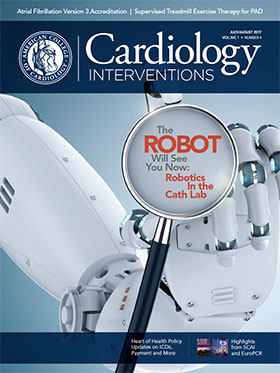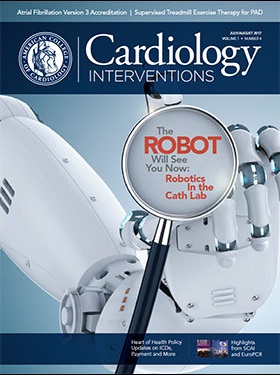Women with pregnancy-associated spontaneous coronary artery dissection (P-SCAD) have more acute presentations and high-risk features than women with SCAD not associated with pregnancy (NP-SCAD), according to results from a novel study published July 17 in the Journal of the American College of Cardiology.
The study resulted in multiple novel findings, identifying the timeline, associated risks and potential factors for patients with P-SCAD. For example, 70 percent of P-SCAD-related events occurred during the first month following delivery or miscarriage, while 54 percent occurred within the first week (median 5 days).
“This timing might correlate in part with the cardiac stress due to the rapid post-delivery uterine contraction and return of massive blood volume to the systemic circulation. However, hemodynamic changes alone might not account for the entire pathogenesis of SCAD,” write the study authors.
Compared with women with NP-SCAD, P-SCAD patients were also more likely to present with STEMI (57 vs. 37 percent; p = 0.009), left main SCAD (24 vs. 5 percent; p <0.0001), multivessel SCAD (33 vs. 14 percent; p = 0.00237) and left ventricular function ≤35 percent (26 vs. 10 percent; p = 0.0071). Medical therapy was more likely to fail in P-SCAD patients, resulting in subsequent revascularization.
The study authors also found P-SCAD patients had a lower prevalence of fibromuscular dysplasia (42 vs. 64 percent; p = 0.047) and extracoronary vascular abnormalities (46 vs. 77 percent; p = 0.0032) than NP-SCAD patients who underwent extracoronary vascular imaging. “This unexpected observation is hypothesis generating, highlighting the potential importance of other contributing factors in P-SCAD,” they continue.
Upon comparing the study results to U.S. birth data, researchers found P-SCAD patients were more often multiparous (p = 0.0167), treated for infertility (p = 0.0004) and had pre-eclampsia (p = 0.001). They note that the “overlap of P-SCAD with pre-eclampsia and similar pattern of presentation with PPCM [post-partum cardiomyopathy] observed in our study is hypothesis generating, particularly because pre-eclampsia and PPCM are speculated as possibly sharing mechanisms of pathogenesis.”
“In addition to these findings, what is remarkable about this study is how it reflects the great progress that has been made in understanding SCAD (pregnancy-associated or not) during the past decade and the rapid evolution of this field,” states Heather L. Gornik, MD, FACC. In a related editorial comment, Gornik highlights how SCAD survivors are “highly motivated to participate in clinical research,” but that only nine observational or interventional studies have enrolled SCAD patients thus far.
She hopes to “see an exponential proliferation of clinical and translational research studies to further understand the pathogenesis of SCAD, to identify mechanisms for primary and secondary prevention, and to determine the best treatment approach.”
Tweet MS, Hayes SN, Codsi E, et al. J Am Coll Cardiol 2017;70:426-35.
<<< Return to top








